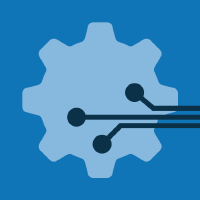Topic Editors
New Developments for Circuit Design: Synthesis, Modeling, Simulation, and Applications
Topic Information
Dear Colleagues,
This Topic will present New Developments for Circuit Design: Synthesis, Modeling, Simulation, and Applications. These developments include modeling, simulation, and synthesis for Analog, Mixed-signal, RF (AMS/RF), and multi-domain (nanoelectronics, biological, MEMS, optoelectronics, etc.) integrated circuits and systems, as well as, emerging technologies and applications. Open-source tools and methods for IC design and experiences with modeling, simulation, and synthesis techniques in diverse application areas are also welcomed. Objective technologies include CMOS, beyond CMOS, and More-than-Moore such as MEMs, power devices, sensors, passives, etc.
This topic seeks to publish original reviews, original articles or communications. We encourage submissions of manuscripts focusing on, but not limited to, current research, novel concepts, technologies and approaches in basic and advanced aspects of Circuit Design.
- CAD and EDA methodologies and tools for AMS systems (CAD/EDA)
Synthesis, Sizing and Optimization
- Multi-level Synthesis Methods
- Physical Synthesis Methods
- High-frequency Circuits and Systems Design
- Low-Power and Energy-Aware Design
- Parasitic-Aware Design
- Variability-aware & Reliability-Aware Design
- Sizing and Optimization Methods
- Procedural Design Methods
Modeling
- Performance Modeling
- Power and Electro-thermal Modeling
- Reliability and Variability Modeling
- RF/microwave/mm-wave Modeling
- Model Order Reduction
- Modeling for Signal Integrity / Power Integrity
- Electromagnetic Compatibility and Signal Integrity
- Electromagnetic Theory and Modeling
- Transmission Line Theory and Modeling
- Automated Model Generation
Simulation, Verification and Test
- Behavioral Simulation
- Numerical and Symbolic Simulation Methods
- RF Circuit Simulation Methods
- Multilevel Simulation Techniques
- Analysis of Variability Effects
- Simulation for Signal Integrity/Power Integrity
- Formal and Functional Verification
- Functional Safety
- Test and Design-for-Test Techniques
- Emerging technologies and applications (ETA)
CAD for/using Emerging Technologies
- CAD for Bio-Electronic Devices, Bio-Sensors
- CAD for Multi-Domain Devices and Circuits
- CAD for Nanophotonics and Optical Devices / Interconnects
- CAD using AI and ML Algorithms
- CAD using Cloud Computing
- AMS CAS Soft and Hard IP Blocks Generating Methodologies
Emerging Devices and Paradigms
- Emerging Device Modeling (Steep-Slope, TFET, NCFET, PTM, Memristor)
- Design Strategies using Emerging Devices
- Emerging Devices in Security
- Devices, Hardware and Methods for Bio-Inspired and Neuromorphic Computing
Hardware Security
- Hardware Security primitives (PUFs, RNGs, ...)
- Attacks and Countermeasures
- Anticounterfeiting
- Methods, Architectures and Tools for Secure Design
- AMS ICs and multi-domain design applications (DES)
Design Applications
- Internet of Everything
- Automotive Systems
- Biomedical and Bio-inspired CAS
- Low-Power Low Voltage CAS
- Sensors and Sensing Systems
- Security Systems
- Aerospace Systems
- Renewable Energy Systems
Dr. Nestor Evmorfopoulos
Prof. Dr. Alkiviadis Hatzopoulos
Prof. Dr. George I. Stamoulis
Topic Editors
Keywords
- integrated circuits
- mixed-signal
- RF
- nanoelectronics
- biological
- MEMS
- optoelectronics
Participating Journals
| Journal Name | Impact Factor | CiteScore | Launched Year | First Decision (median) | APC | |
|---|---|---|---|---|---|---|

Automation
|
- | 2.9 | 2020 | 20.6 Days | CHF 1000 | Submit |

Electronics
|
2.6 | 5.3 | 2012 | 16.8 Days | CHF 2400 | Submit |

Eng
|
- | 2.1 | 2020 | 28.3 Days | CHF 1200 | Submit |

Hardware
|
- | - | 2023 | 15.0 days * | CHF 1000 | Submit |

Micromachines
|
3.0 | 5.2 | 2010 | 17.7 Days | CHF 2600 | Submit |

Signals
|
- | 3.2 | 2020 | 26.1 Days | CHF 1000 | Submit |
* Median value for all MDPI journals in the first half of 2024.

MDPI Topics is cooperating with Preprints.org and has built a direct connection between MDPI journals and Preprints.org. Authors are encouraged to enjoy the benefits by posting a preprint at Preprints.org prior to publication:
- Immediately share your ideas ahead of publication and establish your research priority;
- Protect your idea from being stolen with this time-stamped preprint article;
- Enhance the exposure and impact of your research;
- Receive feedback from your peers in advance;
- Have it indexed in Web of Science (Preprint Citation Index), Google Scholar, Crossref, SHARE, PrePubMed, Scilit and Europe PMC.


